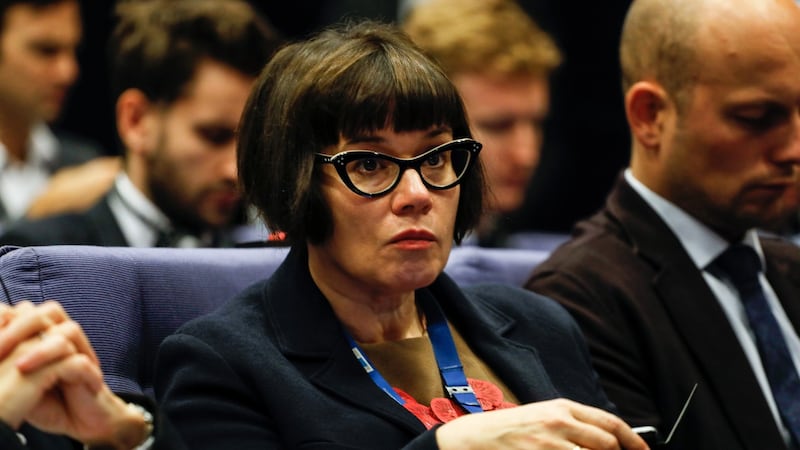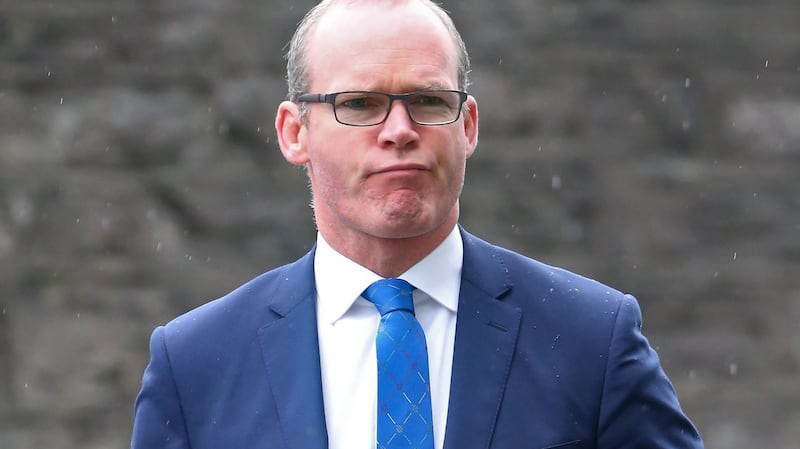The EU-UK discussions on the future of the Border are taking place in two separate strands of the Brexit talks.
First there are the “divorce” talks on the withdrawal agreement.
Second are the “future relationship” talks, which will focus on post-Brexit trade between the European Union and United Kingdom once the transition is over.
Last August, when the UK published its negotiating paper on customs options, the presumption was that the issue would be dealt with on an all-UK basis – no special treatment for Northern Ireland – and the British put two alternative proposals on the table.
Option 1: The “highly streamlined customs arrangement” would reduce border controls by using technical measures to monitor and track goods crossing the EU border, as well as schemes like the “trusted trader” arrangements and small business exemptions.
Option 2: The “customs partnership” arrangement would see the UK acting as the external border of the EU by continuing to levy EU duties on all goods entering from third countries and then providing rebates to those goods which remained in the UK.
These two options remain the basis of their position, though it appears the British cabinet is fiercely divided on which one it wishes to promote. EU negotiators and Dublin have insisted from the start that neither option is workable.
Option 2, which appears to be favoured by prime minister Theresa May, would involve the close tracking of goods through the UK market, a customs procedure which has never been tried before.
Minimal customs checks
It would, in theory, allow goods crossing UK-EU internal borders, including into and out of Ireland, to do so with minimal customs checks as they have already been assessed for duties (although there is also the not-insignificant matter of checking that goods meet EU regulatory standards).
Both approaches were seen as matters for the “future relationship” talks. But before those could even begin, the EU wanted to reach an agreement on separation issues – the withdrawal agreement – which would deal with the UK’s divorce Bill, the rights of EU and UK citizens remaining in both jurisdictions, and, crucially, a post-Brexit copperfastening of the Northern Ireland peace process and Belfast Agreement.
Central to safeguarding the peace process was a commitment by both sides to a “frictionless border” on the island. And in December, to assure the EU that “sufficient progress” was being made in the talks, the UK signed up to three alternatives for the Border.
Without an agreement on the withdrawal agreement in June, however, the EU is adamant that the 'future relationship' talks will have to cease
The first two are as above, the third is a new approach – the “backstop”. This is a fallback guarantee that if the broader talks between the union and the UK fail to come up with an all-UK solution, then London would promise to treat the North as a separate entity in which it would maintain “regulatory alignment” with the EU so that goods would not need to face border checks.
The December accord spells out that: "In the absence of agreed solutions, the UK will maintain full alignment with those rules of the Internal Market and the Customs Union which, now or in the future, support North-South co-operation, the all-island economy and the protection of the 1998 Agreement."
It means that in effect the North would remain part of the customs union (a group with common trade tariffs that includes most but not all EU states, and some non-EU states). In these circumstances, trade between it and the rest of the UK would have to undergo customs checks on the Irish Sea.
Belated realisation of that reality, prompted by a visceral DUP reaction to it, seems to have caused London to back off describing any means of “operationalising” the offer.
‘Backstop’ solution
The guarantee was nevertheless translated by the EU into the withdrawal agreement in language that the UK has yet to agree: “With respect to the draft protocol on Ireland/Northern Ireland, the negotiators agree that a legally operative version of the “backstop” solution for the Border . . . should be agreed as part of the legal text of the withdrawal agreement, to apply unless and until another solution is found.”
Without an agreement on the withdrawal agreement in June, however, the union is adamant that the “future relationship” talks will have to cease, jeopardising not only the trade treaty, but also the deal on transition.
For now, London appears to have decided it can long-finger the “backstop” option in the withdrawal agreement divorce talks. This seems to be based on the hope that a deal in the “future relationship” discussions, perhaps on the basis of a “partnership” model, would make the need to agree a backstop redundant.
But internal divisions in the Tory Party mean May can’t even spell out her case for partnership.
Unless London comes up quickly – there are three negotiating sessions before the next EU summit at the end of June – with a means of breaking the deadlock on the Border in both strands of the talks there is an increasing possibility of a “no deal” and that the UK will fall out of the EU at the end of March next year with a horrible hard bang.
What happens next?
Brexit timeline
June 28th-29th, 2018: EU summit
It is hoped that the bulk of the legal text for the withdrawal agreement – including the deal on transition and the Irish protocol – will be ready for agreement.
Leaders will have to be assured of “sufficient progress” to allow time for the legal text to be drafted. Irish want to tie down agreement on “backstop”.
October 18th-19th, 2018: EU summit
Expected approval of completed legal text of withdrawal agreement and the political text on the framework of the “future relationship” in time to allow EU and British parliaments to ratify the Withdrawal Treaty in January 2019.
March 29th, 2019
At midnight in Brussels and 11pm in Dublin, Britain’s membership of the European Union will lapse, two years to the day since it formally filed notice to quit. If there is no ratified withdrawal treaty, there is likely to be legal chaos unless all sides agree to a complex special extension.
March 30th, 2019
If the withdrawal treaty is approved, Britain will start a transition period during which it will effectively maintain all its benefits in terms of access to EU markets, and be bound by all EU rules and budgets, while losing its vote. It will be consulted on some issues and can negotiate its own trade deals.
Talks will open on the legal text of an EU-UK trade agreement based on the political framework already agreed.
December 31st, 2020
The transition period ends, and Britain becomes free to implement its own trade deals with other countries and free of all obligations to the union.
January 1st, 2021
If all goes to plan, a new EU-UK free trade deal takes effect, along with special treaty relationships in areas such as security, defence and research.
What’s in “the Irish protocol”?
Safeguarding 142 areas of North-South co-operation, underpinned by both obligations to EU regulations and/or the Belfast Agreement, are being discussed in the separate Irish strand of the Brexit discussions.
The Irish protocol to the withdrawal agreement sets out the wide range and detail of the discussions.
As well as ensuring free trade in goods, the protocol says it shall “be implemented and applied so as to maintain the necessary conditions for continued North-South co-operation, including in the areas of environment, health, agriculture, transport, education and tourism, as well as energy, telecommunications, broadcasting, inland fisheries, justice and security, higher education and sport”.
In the annexes to the protocol are headings for the following provisions: protection against discrimination, free movement of goods, value added tax, excise duties, sanitary and phytosanitary rules, production and marketing of agricultural and fisheries products, integrating wholesale electricity markets, and environmental protection “concerning the control of the import into, release into, or transport within the union of substances or material, or plant or animal species, and prohibiting state aid subsidies”.
Among the 142 issues to be enumerated in those annexes are:
Agriculture: harmonisation of rules in plant health, animal disease, farm safety, TB eradication, alien species, conditions for transhipment of animals, plant passporting, seed potatoes, wood packaging, aquaculture standards.
In environment: water quality, habitats directive, flood-risk management, information sharing, mapping geodetic data, movement of radioactive isotopes, wildfire management, fracking regulation, air-quality standards, rules on endangered flora and fauna, on handling hazardous chemicals, packaging regulation, waste shipment.
Telecommunications: the introduction of the newly approved EU audiovisual media directive (restrictions on unacceptable content, quotas on European programming, limits on advertising), and ensuring the continuation of right to roam for mobiles.
Brexit talks: Who’s who
Michel Barnier
European chief negotiator on Brexit. Barnier also leads the 70-strong Article 50 task force responsible for framing the EU position, conducting negotiations, and liaising with all interested parties.

Sabine Weyand
Second negotiator for the EU.

David Davis
Britain’s secretary of state for exiting the European Union and chief negotiator on Brexit.
Oliver Robbins
Davis’s deputy negotiator.
Emer Deane
Leads the Brexit Unit at Ireland’s diplomatic mission to the EU. As a member of the European Council Article 50 Working Group with diplomats from other members states, Deane is consulted after each round of talks by the task force.
Declan Kelleher
Permanent representative of Ireland to the EU. A group of 27 European ambassadors receive regular reports from the working group.

Simon Coveney
Ireland’s Minister for Foreign Affairs. As a member of the European General Affairs Council with Ministers from 27 members, Coveney gets monthly reports from the ambassadors’ group.

Helen McEntee
Ireland’s Minister for European Affairs. As a member of the European General Affairs Council with Ministers from 27 members, McEntee gets monthly reports from the ambassadors’ group.

Leo Varadkar
The Taoiseach attends the EU summits.





















